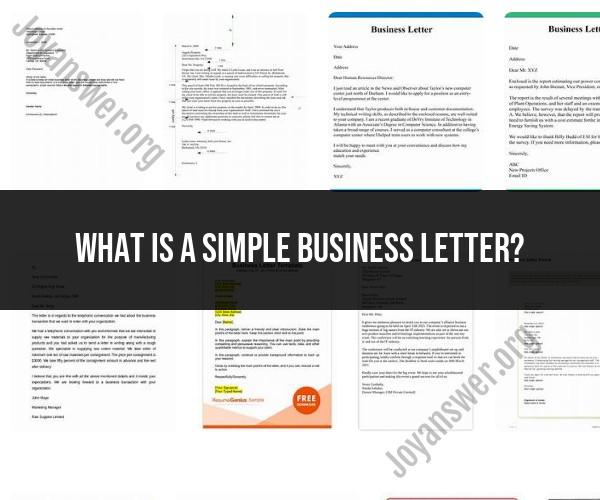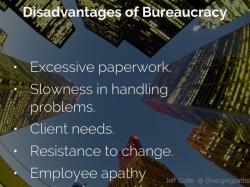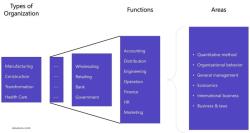What is a simple business letter?
A simple business letter is a formal written communication used in various business, professional, or official contexts. It follows a standardized format and is typically used for purposes like job applications, official correspondence, inquiries, complaints, or general communication within the business world. Here's a basic guide to the format and components of a simple business letter:
1. Sender's Information:
- Your name
- Your title or position (if applicable)
- Your company or organization name (if applicable)
- Your mailing address
- City, state, ZIP code
- Your phone number
- Your email address
2. Date:
- Include the date on which you are writing the letter. Place it either on the left or right side of the page, a few lines below your address.
3. Recipient's Information:
- Recipient's name
- Recipient's title or position (if known)
- Company or organization name (if applicable)
- Mailing address
- City, state, ZIP code
4. Salutation:
- Begin the letter with a formal salutation. Use "Dear Mr." for a male recipient, "Dear Ms." for a female recipient, or "Dear Dr." for a doctor or professor. Follow with the recipient's last name.
5. Opening Paragraph:
- Start with a concise and polite introduction.
- Mention the purpose of your letter or briefly explain the context for writing.
6. Body of the Letter:
- This section provides the main content of your letter.
- Use clear and concise language to convey your message or request.
- Organize your thoughts logically and use paragraphs to separate different points or ideas.
7. Closing Paragraph:
- Summarize the key points or restate the purpose of the letter.
- Express your expectations or next steps if applicable.
- Offer to provide further information if necessary.
8. Closing (Complimentary Close):
- Choose a polite closing, such as "Sincerely," "Yours truly," or "Kind regards." Follow with a comma.
9. Signature:
- Leave a space after the closing and type your full name.
- If the letter is printed, sign your name in the space above your typed name.
10. Enclosures or Attachments:- If you are including any additional documents with the letter, such as a resume or other materials, mention them at the end of the letter (e.g., "Enclosures: Resume, References").
11. Copy (CC):- If you are sending copies of the letter to other individuals, mention "CC" followed by their names at the end of the letter.
12. Reference Line (Optional):- If your letter is in response to a previous communication and has a reference number or subject, you can include it just above the salutation (e.g., "Re: Job Application").
A simple business letter should be concise, professional, and free from grammatical or spelling errors. Use a standard font (e.g., Times New Roman or Arial) and maintain a clean, well-organized appearance. The format and style can be adjusted based on the specific requirements of your organization or the type of communication you are sending.
Crafting a Simple Business Letter: Step-by-Step Guide
Writing a simple business letter is a skill that everyone should know. Business letters are used to communicate with clients, customers, and other professionals in a formal and professional manner.
Here is a step-by-step guide on how to craft a simple business letter:
- Start with your contact information. This includes your name, address, phone number, and email address.
- Include the date. This will help the recipient to keep track of when the letter was sent.
- Address the recipient. Be sure to use the recipient's full name and title. If you do not know the recipient's title, you can simply use "Dear [Recipient's Name]."
- State the purpose of your letter. Get to the point quickly and clearly state the reason for your writing.
- Write the body of your letter. The body of your letter should be clear, concise, and professional. Be sure to proofread your letter carefully before sending it.
- Close your letter. Use a formal closing, such as "Sincerely" or "Best regards."
- Sign your letter. Be sure to sign your name in blue or black ink.
Business Correspondence Made Easy: Writing a Basic Letter
Writing a basic business letter is not difficult, but it is important to follow a few simple guidelines. Here are some tips for writing a basic business letter:
- Use a professional tone. Avoid using slang, informal language, or contractions.
- Be clear and concise. Get to the point quickly and avoid unnecessary details.
- Be organized. Use paragraphs to break up your letter and make it easy to read.
- Proofread carefully. Make sure there are no errors in grammar or spelling.
Here is an example of a basic business letter:
Dear [Recipient's Name],
I am writing to inquire about the [position name] position that is currently open at your company. I have been following your company for some time now and I am very impressed with your work in the [industry] industry.
I have [number] years of experience in [relevant field] and I have a proven track record of success. In my previous role at [previous company], I was responsible for [list of responsibilities]. I am confident that I have the skills and experience necessary to be successful in the [position name] position.
I have attached my resume for your review. I am available for an interview at your earliest convenience.
Thank you for your time and consideration.
Sincerely,[Your Name]
Business Letter Essentials: Creating a Simple and Effective Message
When writing a business letter, it is important to keep the following essentials in mind:
- Clarity: The purpose of your letter should be clear and concise. The recipient should be able to understand why you are writing and what you are asking of them.
- Conciseness: Avoid using unnecessary words and phrases. Get to the point quickly and clearly.
- Professionalism: Use a professional tone and avoid using slang or informal language. Proofread your letter carefully before sending it.
Here are some tips for creating a simple and effective business letter:
- Use a clear and concise subject line. This will help the recipient to understand the purpose of your letter and to decide whether to open it immediately.
- Start with a strong introduction. Get to the point quickly and state the purpose of your letter.
- Write the body of your letter in a clear and concise manner. Avoid using unnecessary words and phrases.
- Use paragraphs to break up your letter and make it easy to read.
- End your letter with a strong call to action. Tell the recipient what you want them to do next.
- Proofread your letter carefully before sending it. Make sure there are no errors in grammar or spelling.
By following these tips, you can write simple and effective business letters that will communicate your message clearly and professionally.













